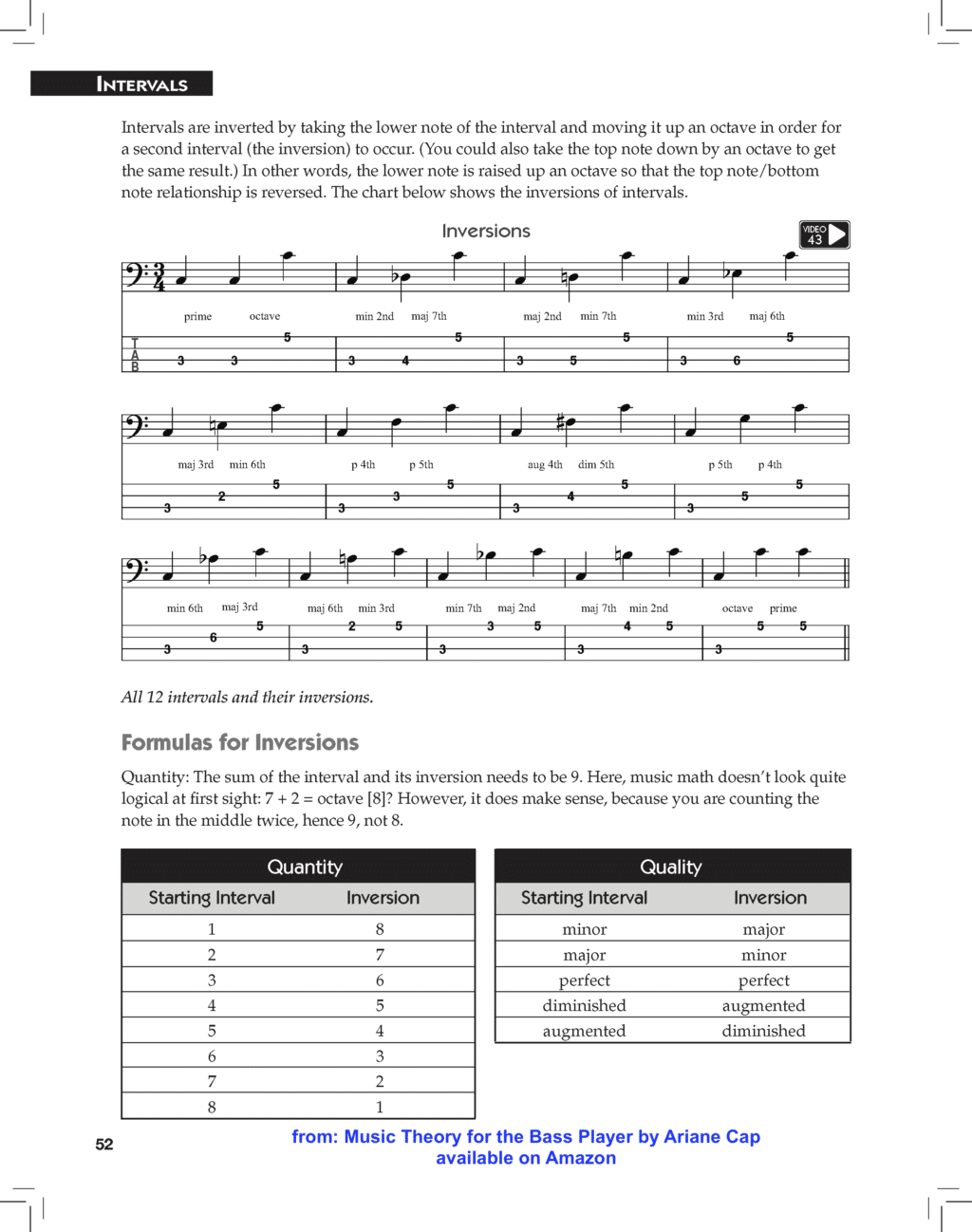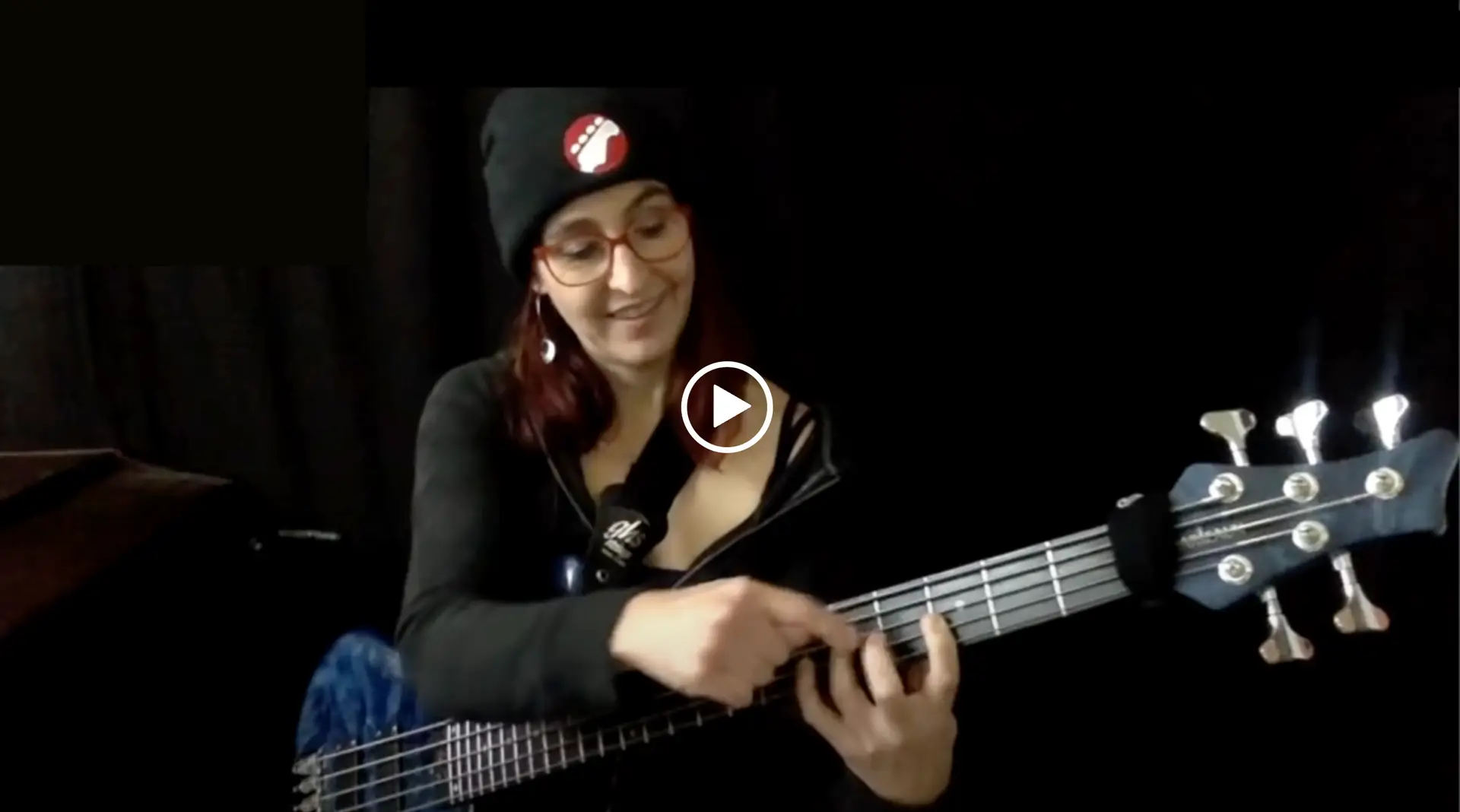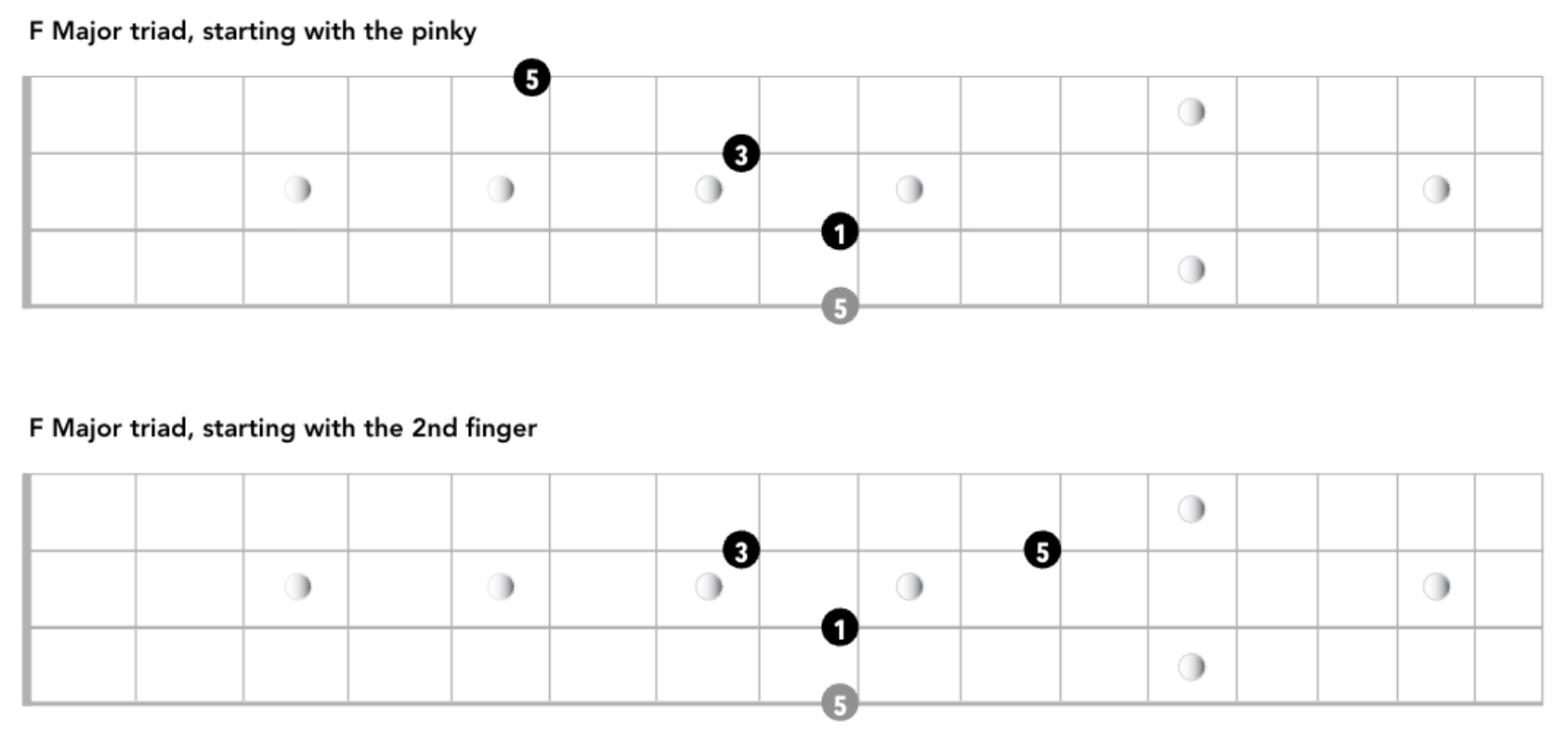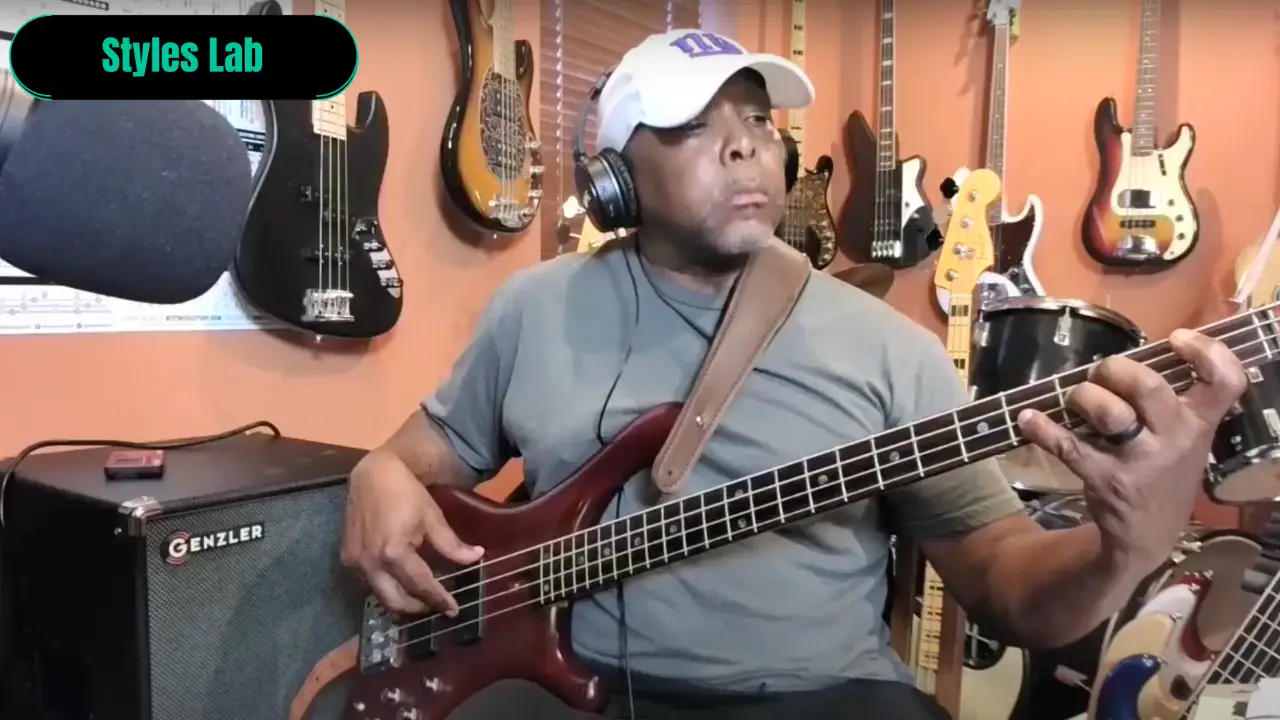Inversions often cause some confusion, so here is a breakdown. Several music theory items can be inverted. Let’s start here with…
Interval Inversions
Intervals can ascend or descend. If you play a fifth ascending and then play that backwards – that is NOT an inversion, though many think that. Inversions are important to grasp for the bassist. Let’s clear this up.
This is an ascending fifth:

C ascending to G.
Okay, what goes up, must come down, so G-C, then, is a descending fifth:
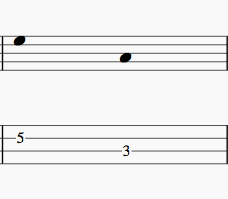
G descending to C
On the bass, this fifth looks, for example, like this:
I call this fingering a “2 by 1” – two frets up, up one string. (There are other ways to finger fifths as well, but for now, let’s just look at this one:)
purple: ascending; orange: descending. Play it on your bass and hear it. This is NOT an inversion. This is just playing an interval in both directions.

So, if I descend by a fifth from C, I land on an F. So, C-F is a fifth, specifically a descending fifth.
The latter often causes confusion – wait, didn’t you just say the fifth of C is G, not F?
Yes, the fifth of C, as in “the fifth scale degree”. Or as in “C-G ascending”.
But if you descend from C by a fifth, you land on an F, not a G:

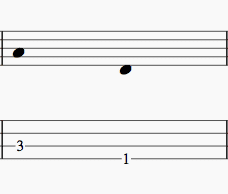
And yes, if you are grooving and going to the V chord, the chord built on F is not the chord you want. This is one reason why you must know these things. So, when you want to descend and land on the same note as when ascending (G) you need to desscend by a fourth to reach that fifth scale degree:

In other words: If I want to reach a G from a C, I have two options
(there are more if you add in octaves, but for now let’s focus on these two):
- Either ascend by a fifth.
- Or descend by a fourth.
- In either event, you are playing C to G.
The Take Aways so Far:
- Inversion is not turning the direction of the interval around.
- Always be specific whether you are asking for an interval to ascend or descend.
What, then, is an Inversion?
You already know, that if you want to get from C to G you can achieve that by playing a fifth ascending from C to a G above or by descending by a fourth from said C to the G below.
In this case, you are inverting the interval, and the best way to think about this is to realize that now there are three notes involved, one C and two Gs an octave apart. This is different to what we did at first, ie, just playing two notes ascending and descending.
Music Math Defies the Odds
Check out the graph below. An inversion of interval X is the interval that is needed to complete the octave. The octave here is formed by the two Gs. The note in the middle, C, is a fifth from the top note and a fourth from the bottom. IE: Fourths and fifths are inversions of each other.
Which leads to the mind-blowing realization that in music 4 plus 5 equals 8 (octave).
Which does, however, make sense because we are counting the middle note (C) twice, once as part of the fifth, and once as part of the fourth. Said differently, the interval names reflect counting the notes from the root not the steps (number of half or whole steps). So I think the order of the universe is restored.

Inversion Formula
Numbers First
Take any interval and – to find its inversion – ask yourself what number is needed to complete it to 9.
Second -> Seventh.
Third -> Sixth.
Fourth -> Fifth
Tritone -> Tritone. (exactly the halfway point)
Fifth -> Fourth.
You get the idea.
Unison -> Octave.
What about major, minor, diminished, augmented?
Always the opposite.
Major third -> Minor sixth. (Example: C ascend to E=major third. E ascend to C above=minor sixth)
Major second -> Minor seventh. (Example: C ascend to Db=minor second. Db ascend to C above=major seventh)
Augmented fourth -> DIminished fifth (Example: C ascend to F#=augmented fourth. F# ascend to C above-diminished fifth)
Complete Table
In my book Music Theory for the Bass Player, find a table with all important inversions within the octave. Page 52. I pulled it for you below.
Video 43 goes with this page:
Why do you need to know this?
Because when you play grooves and want to hit certain intervals, you can create much more variety by playing interval inversions. In other words, playing your notes in different octaves. Get this under your fingers and the fretboard opens up.
Take this common blues ending for example:
- Version on the left – the first interval ascends by a major third.
- Version on the right – the first interval descends by its inversion (a minor sixth).

Practice
Take some of your favorite grooves and experiment with inversions. What is the effect?


